Antinol® Latest Studies
Sorted by recent
 Filter Studies by Smart Tags
Filter Studies by Smart Tags
Bone & JointCardiovascularCase Study & ProceedingCatDogEAB 277™EfficacyExotic PetImmunologyNeuro & BehaviorOphthalmologyOralRabbitRenalRespiratoryRodentSafetySkinUTI
Smart Search
Safety study of polyunsaturated fatty acids extracted from New Zealand green lipped mussel and krill on hematology and blood chemistry profiles of healthy

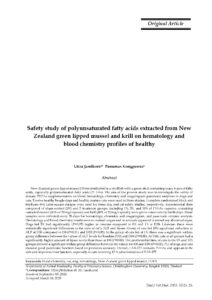
Abstract
New Zealand green-lipped mussel (Perna canaliculus) is a shellfish with a green shell containing many types of fatty acids, especially polyunsaturated fatty acids (PUFAs).
The aim of the present study was to investigate the safety of dietary PUFAs supplementation on blood hematology, chemistry and coagulogram pancreatic enzymes in dogs and cats. Twelve healthy beagle dogs and healthy mature cats were used in these studies. Complete randomized block and triplicate 4×4 Latin square designs were used for these dog and cat safety studies, respectively. Experimental diets composed of sham control (0X) and 3 treatment groups, including 1X, 3X, and 10X of PUFAs capsules containing extracted mussel (60% or 30 mg/capsule) and krill (40% or 20 mg/capsule), were given consecutively for 56 days.
Blood samples were collected every 28 days for hematology, chemistry and coagulogram, and pancreatic enzyme analysis. Hematology and blood chemistry results were in normal ranges and no animals appeared to reveal any abnormal signs.
Dogs fed 3X had significantly (P<0.05) higher in creatine compared to 0X and 1X at D28. Likewise, there were statistically significant differences in the time of cat’s ALT and lipase. Group of cats fed 10X significant reduction in ALT at D56 compared to D0 (P<0.01) and D28 (P<0.05).
In the group of cats fed at 1X, there was a significant within-group difference between the values of ALT levels for baseline (D0) and D56 (P<0.05). At D56, cats in all groups had a significantly higher amount of lipase levels than those at D0 (P<0.05). The prothrombin time of cats in the 0X and 10X groups showed a significant within-group difference between the values for D0 and D56 (P<0.05). PLI of dogs and cats showed good pancreatic function based on precision accuracy.
Overall, EAB-277 contains PUFAs and appears to be safe and improves liver function, especially in cats receiving 10 X administration of EAB-277.
Keywords: blood chemistry, cat, dog, hematology, New Zealand green lipped mussel, PUFA

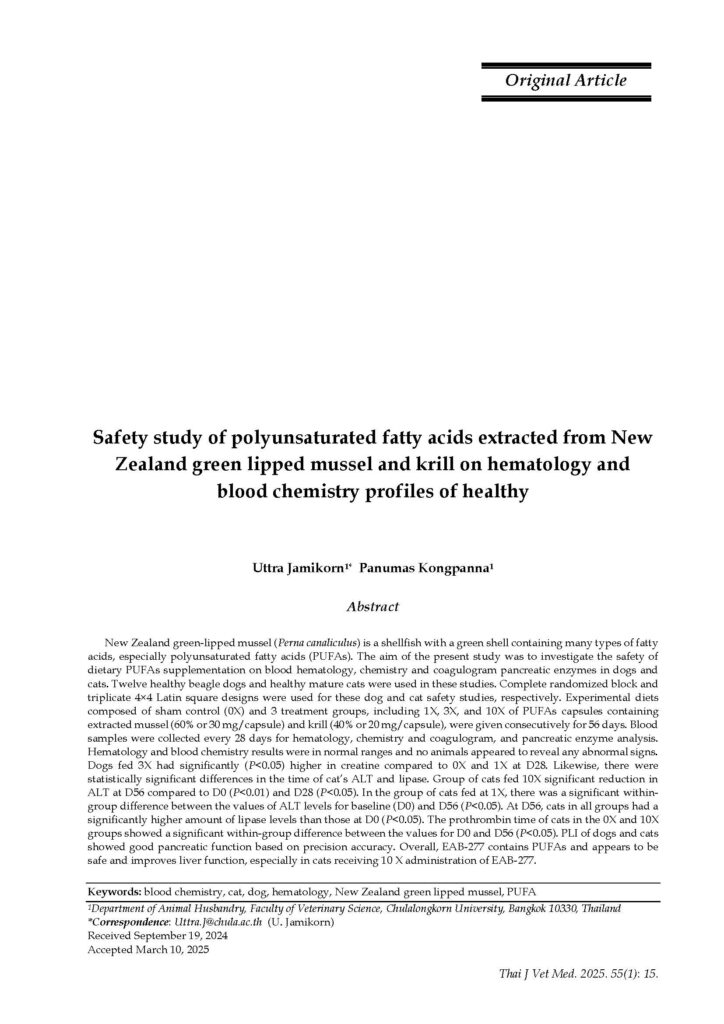
Antinol® Case Study Contest 2022


Antinol® EAB-277® – The Executive Summary

Antinol® Rapid is a potent synergistic blend of 2 marine lipid extracts chosen for their unique enhancement formula called EAB-277®.
EAB-277® is the key active ingredient of this advanced formula formulated to promote optimal benefits through its synergistic efficacy contains > 90 free fatty acids full spectrum of Omega 3 including ETA, EPA, DHA as well as other key Polyunsaturated fatty acids (PUFAs) and antioxidants.
The two marine lipids used in Antinol® Rapid are proprietary and exclusively produced. The exact combination of 30mg lipid fractions from Perna canaliculus (New Zealand green lipped mussel) and 20mg high phospholipid krill oil is the result of years of research combining and isolating lipid groups and essential fatty acids to find the optimal nutrient synergy.
EAB-277®’s proprietary high phospholipid krill oil is high in polar lipid enrichment which enhances bioactivity “Potency” of this marine oil blend formula as a result of proven efficacy.
The Antinol® Rapid EAB-277® blend has been proven via laboratory tests to be more effective than either of the individual lipids alone in inhibiting inflammation markers such as nitric oxide, TNFα, and IL-6.



PCSO-524® in comparison
with Mussel Powder

The information of PCSO-524® (New Zealand Green-lipped mussel extract) compared to mussel powder in production, quality, ingredients, potency, including the list of scientific journal and case studies.
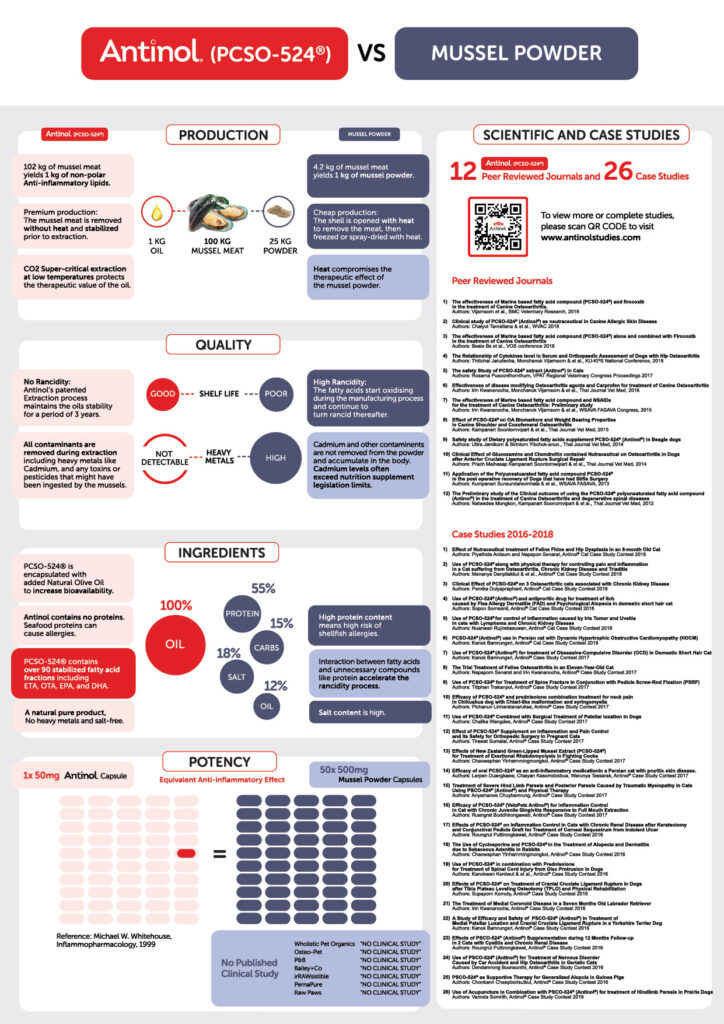

Antinol® Case Study Contest 2020

The 8 Case Studies from Antinol® Case Study Contest of 2020.
________
1st Winning Awards
1) Use of PCSO-524® and Cyclosporin for Treatment of Immune-Mediated Polyarthritis in Dogs
2) Use of PCSO-524® for Supplementary Treatment of Protein Losing Nephropathy in Animals
________
2nd Winning Awards
3) Use of PCSO-524®(Antinol®) in a Pomeranian Dog with Degenerative Mitral Valve Disease (DMVD) and Cardiac Tumor of the Left Atrium
________
3rd Winning Awards
4) Use of PCSO-524 (Antinol®) for Treatment of Chronic Pododermatitis in FIghting Cocks
5) Use of PCSO-524® with Physical Rehabilitation to Regain Mobility in Dogs after Femoral Head and Neck Excision
6) Use of PSCO-524® (Antinol®) and Casting for Treatment of Tetraparesis and Neck Pain Due to Atlantoaxial Instability and Subluxation of the 1st-2nd Cervical Vertebrae
7) Effect of One Year Treatment with PCSO-524® on Feline Dermatophytic Pseudomycetoma

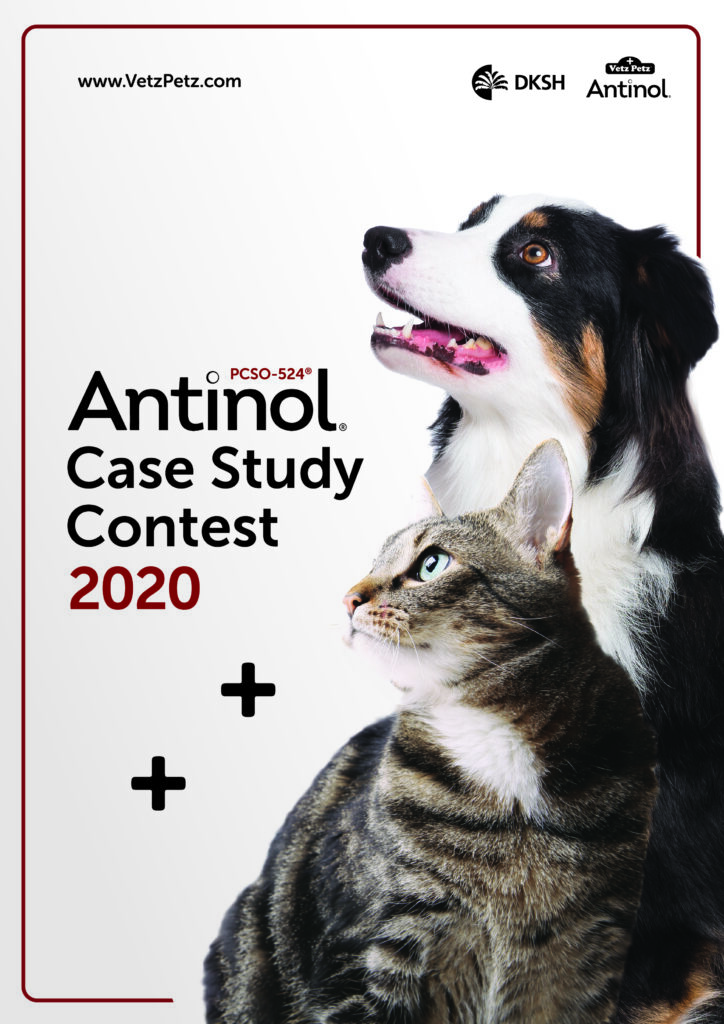

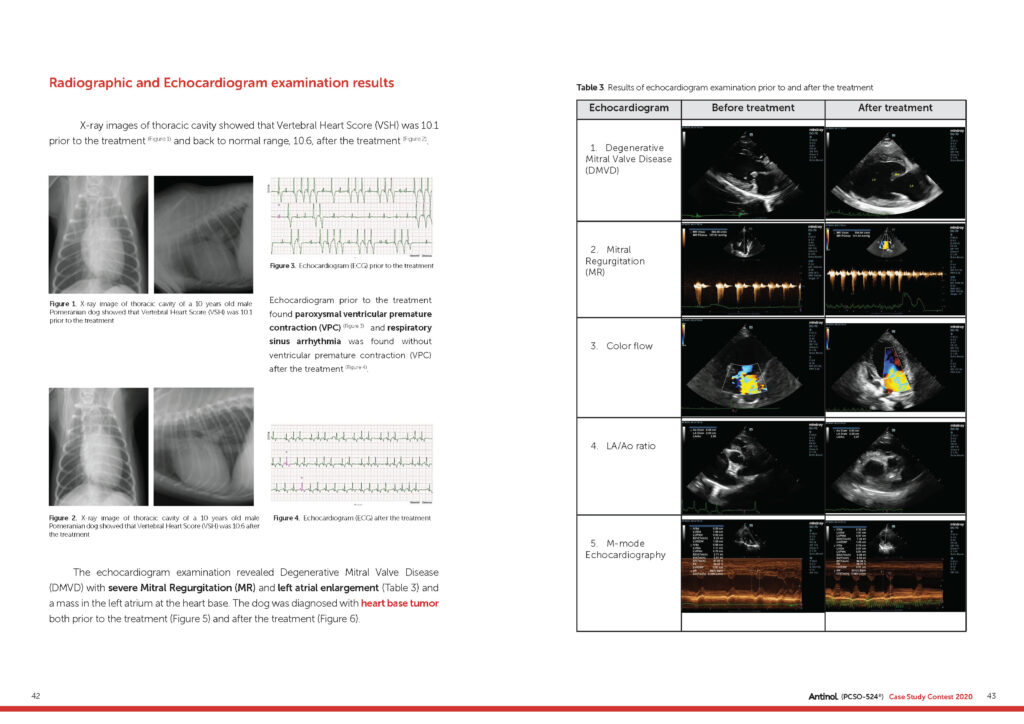
Effect of One Year Treatment with PCSO-524® on Feline Dermatophytic Pseudomycetoma

Feline dermatophytic pseudomycetoma is fungal infections of the skin caused by dermatophytes (Microsporum spp.)
The diagnosis is based on histopathological test. The infection causes clinical lesion and chronic inflammation of the skin.
Long-term treatment is necessary with antifungal agents and anti-inflammatory drugs are recommended in case of severe inflammation.
Due to anti-inflammatory and skin enrichment effects of PCSO-524® (Antinol®), it is used for supportive treatment of feline dermatophytic pseudomycetoma in this case.
Administration of PCSO-524® (Antinol®) also reduces the risk of adverse effects from using other anti-inflammatory agents.
The use is simple and can reduce the dosage of other medications, particularly in difficult cats that do not cooperate with taking oral medicine.
Treatment outcome can be evaluated from physical examination, hematological and blood chemistry tests, and body weight gain.
Over one-year treatment period, there was no signs of side effects from the treatment, the blood test results were stable and the quality of life and social interaction between the cat and the owner was improved.

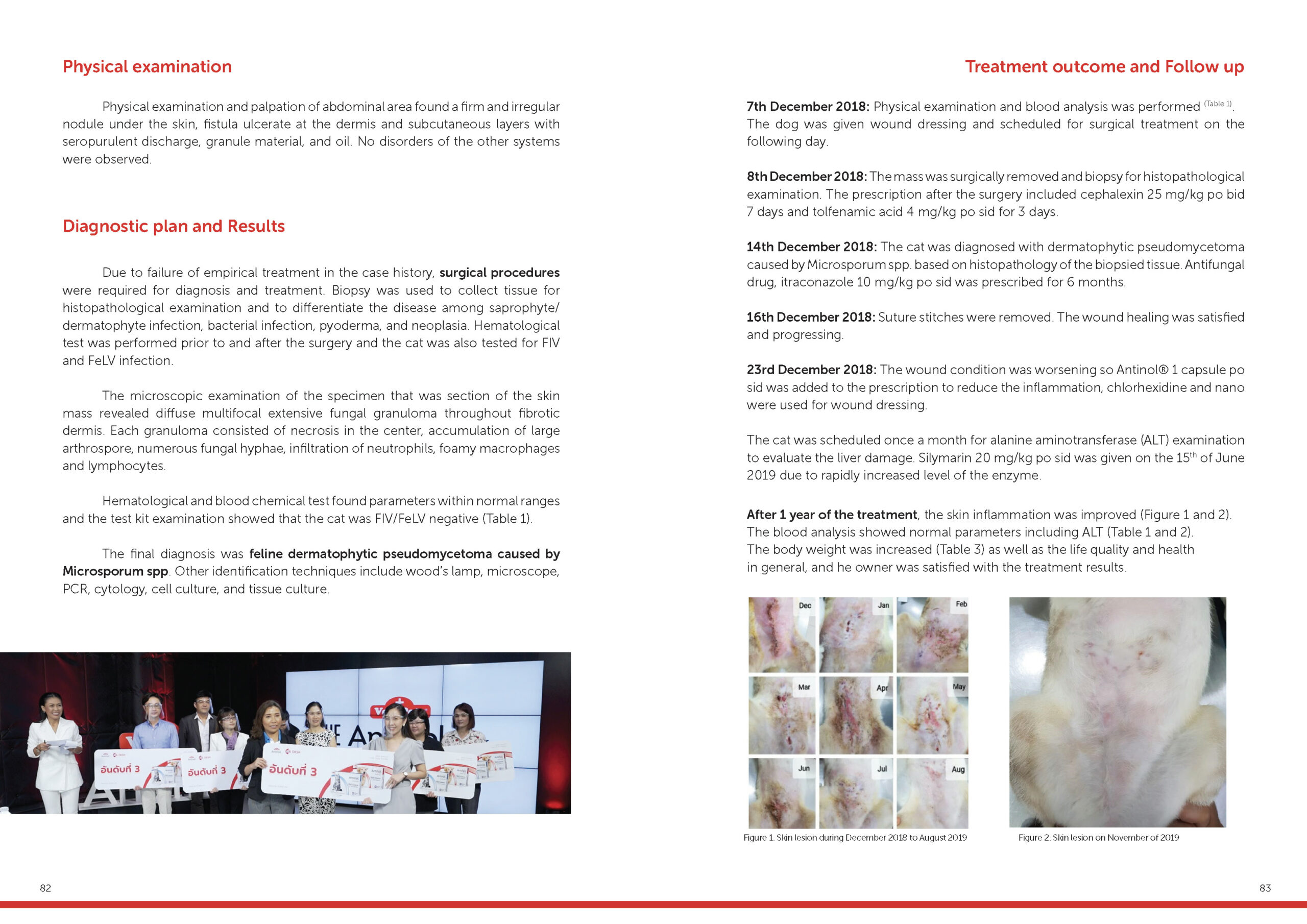
Report Clinical Results of Feline Patients with Chronic Kidney Disease (CKD) that received PCSO-524® Vol.10 (2019 February)

Chronic Kidney Disease in cat(2) treated with Antinol®
Mongrel Cat, 7 years old was admitted to Maizuru Animal Medical Center, Kidney disease was observed.
Overview: Patient was repeatedly hospitalised for treatment of CKD. But two weeks after Antinol® was added to treatment regimen, decrease in BUN, Are, and P level as well as improvement of appetite and activity was observed.
(Addition of Antinol® to treatment: 1st 2 weeks; 2 caps / day, orally. Continued with 1 caps / day, orally for 1 week. Increased dose in the 4th week to 2 caps / day, orally since appetite decreased.)

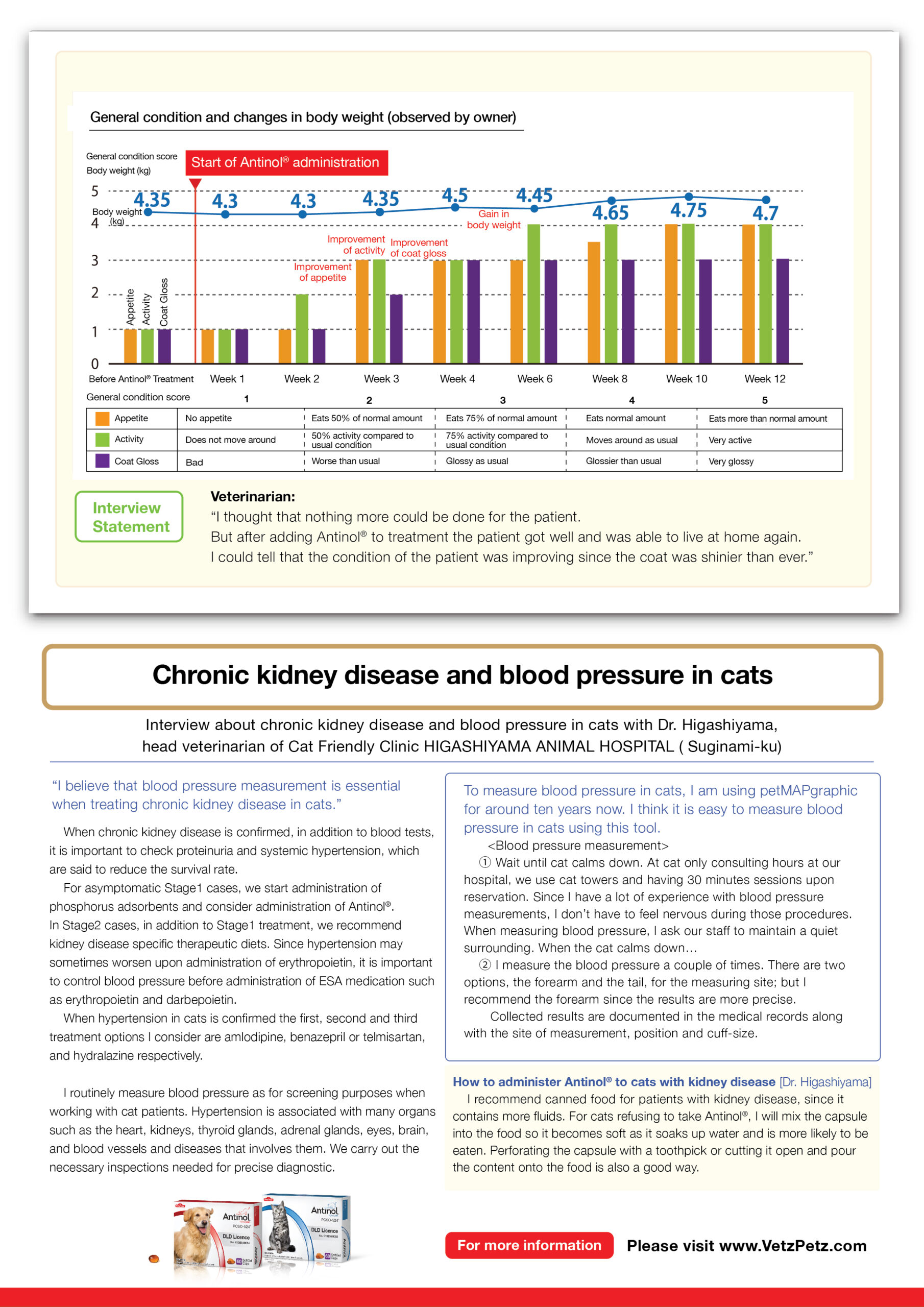
Antinol® Case Study Contest 2018

The 6 Case Studies from Antinol® Case Study Contest of 2018.
Antinol® Contest has been organized successfully for 3 years since 2016 in Thailand.
The key objective of this scientific contest is to encourage knowledges sharing amongst the Vet practitioners on how to treat the companion animals inflammatory cases safely & effectively by using Antinol in conjunctive with others medicines especially the NSAIDs (Non Steroidal anti-inflammation drugs) which is the drug of choices of anti-inflammatory problems.

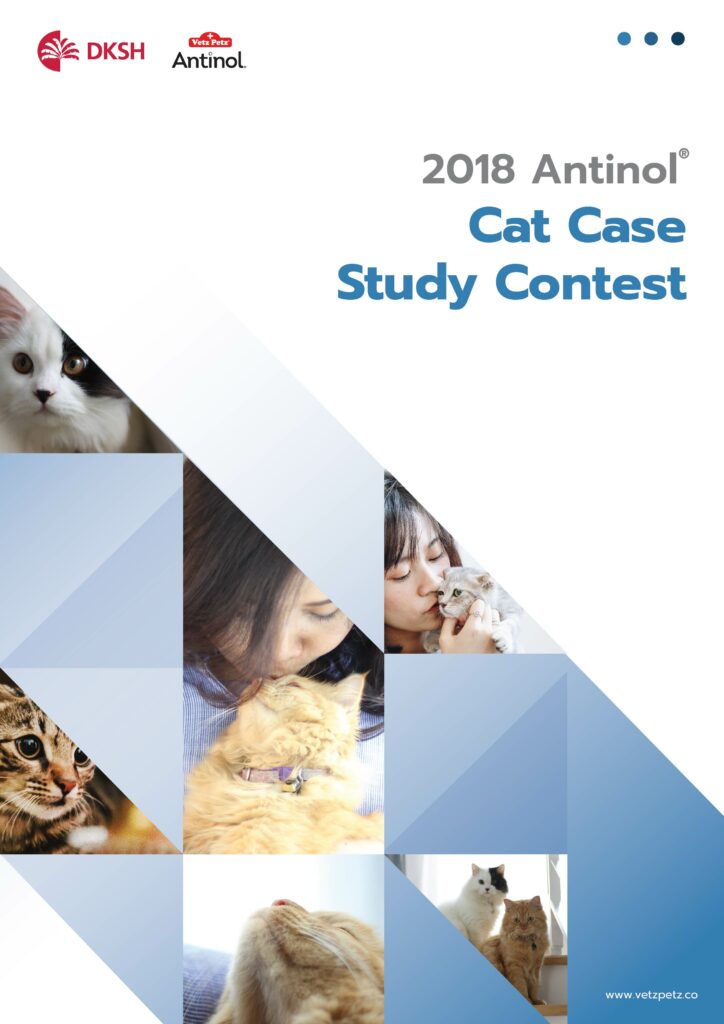


Report Clinical Results of Feline Patients with Chronic Kidney Disease (CKD) that received PCSO-524® Vol.9 (2018 September)

Chronic Kidney Disease in cat(1) treated with Antinol®
Mongrel Cat, 7 years old was admitted to Maizuru Animal Medical Center, patient was diagnosed with CKD
Overview: Patient was not responding to treatment but decrease in BUN and Creatinine (Are) levels were observed after Antinol® was added to treatment regimen.
(Addition of Antinol® to treatment: 1st 2 weeks; 2 caps / day orally. Continued with 1 caps / day orally.)

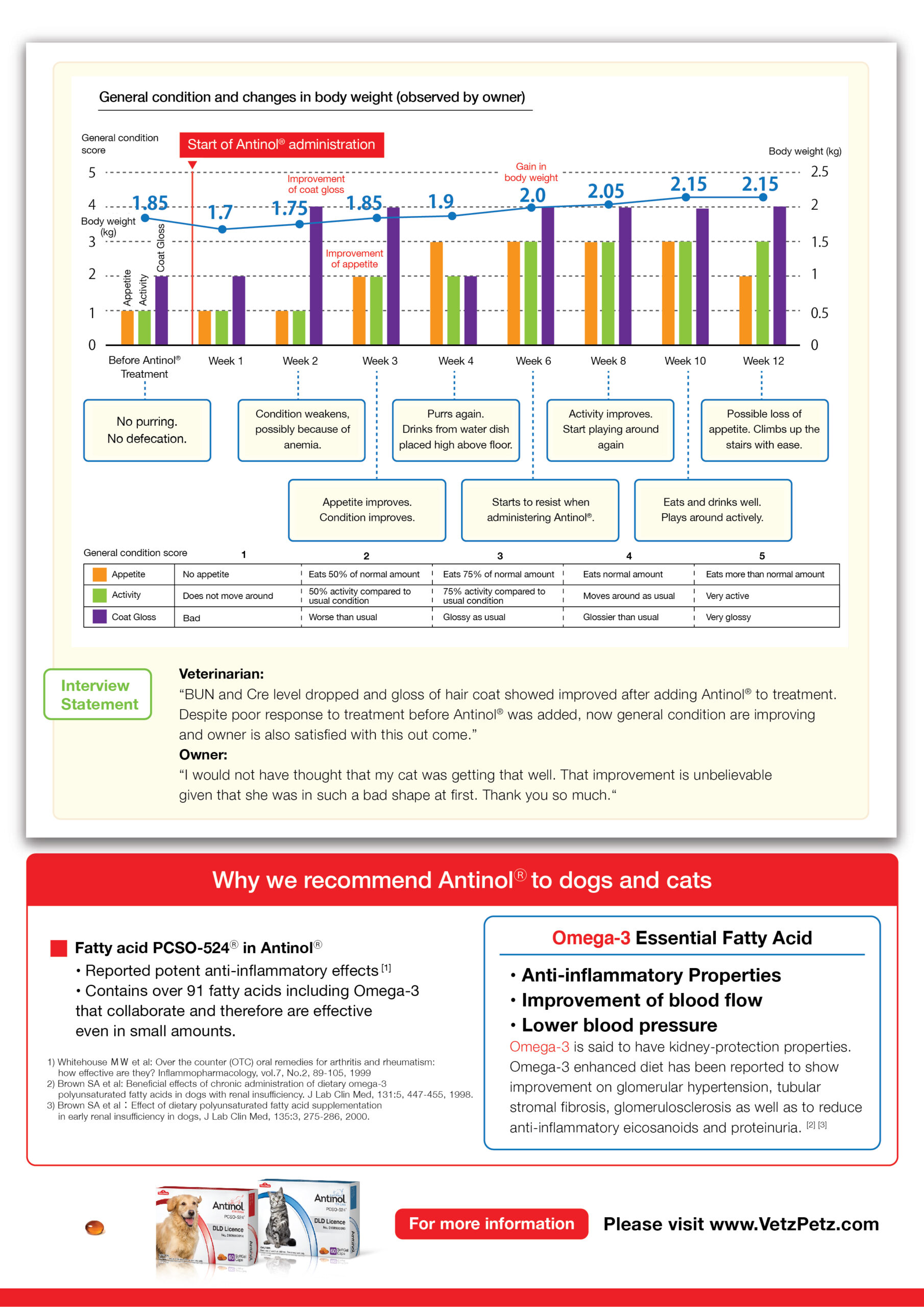
PCSO-524® (Antinol®) Use in Persian Cat with Dynamic Hypertrophic Obstructive Cardiomyopathy (HOCM)

A Persian cat aged 21 years was diagnosed with Dynamic Hypertrophic Obstructive Cardiomyopathy (HOCM) and treated with PCSO-524® (Antinol®) for 45 days.
The cat regained quality of life and daily activities such as grooming and walking, increased appetite, ingestion and weight gain after the treatment. Serum Amyloid A (SAA), which is an inflammatory marker in cats, was reduced down to normal after 15 days of PCSO-524® (Antinol®) administration.
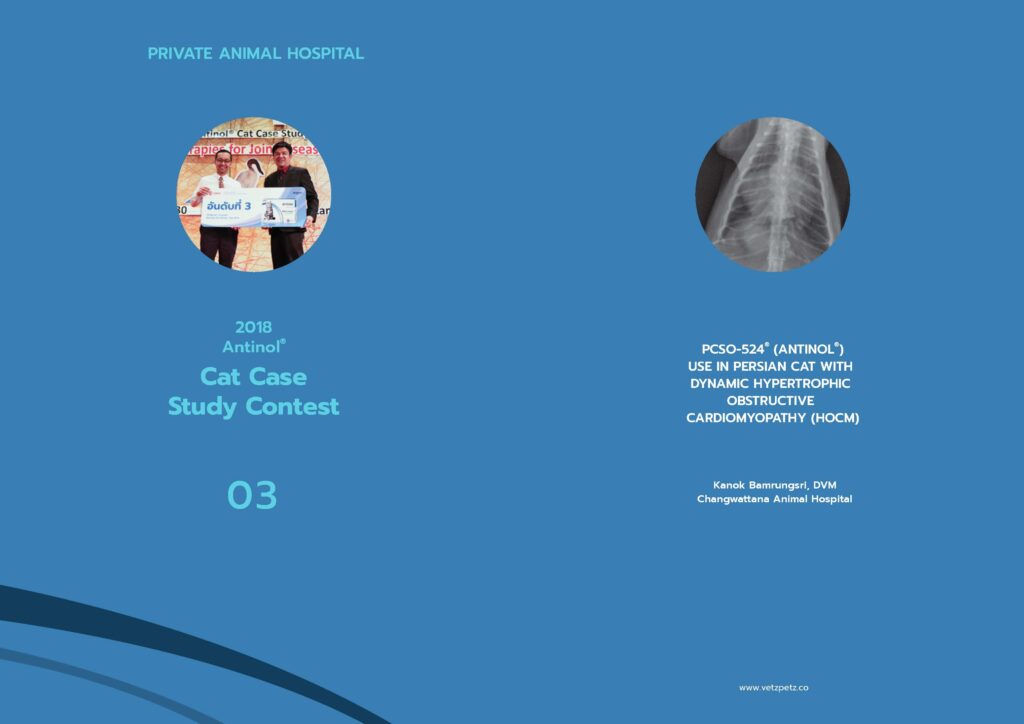
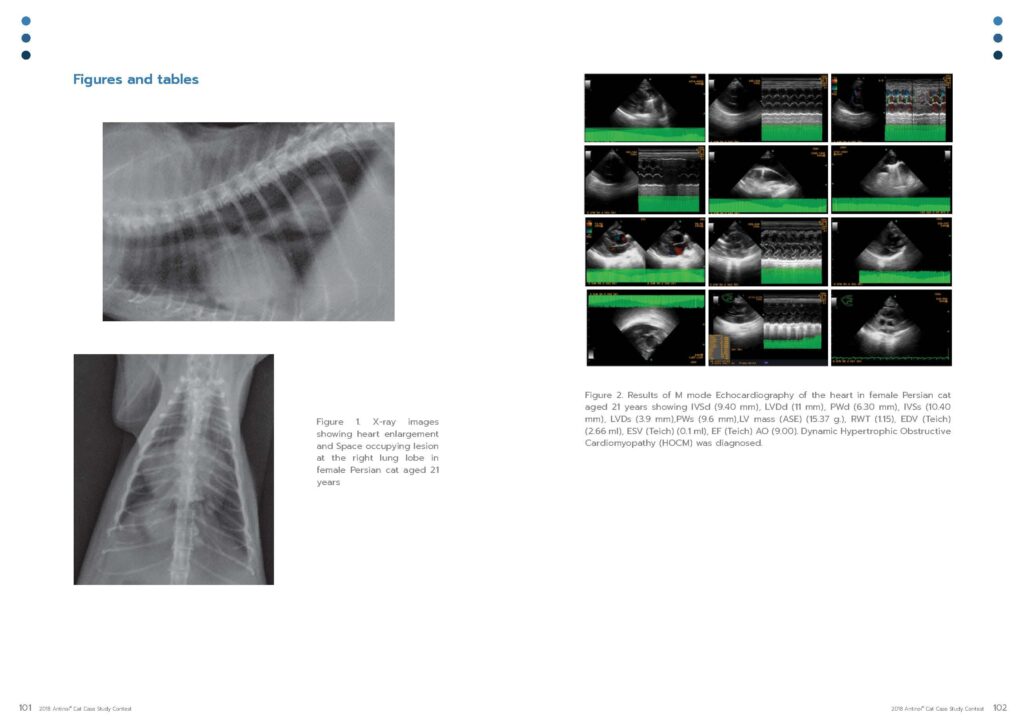
Updated Study Topics
New researches and publications related to PCSO-524® and its result in clnical test submitted by veterinarians on the global conferences every year and the data keeps growing with more studies conducted


 Authors:
Authors: